Thinking about ice fishing for walleye in Wisconsin? Well, you’re in luck.
Wisconsin is home to some of the best lakes for walleye ice fishing. Green Bay, Lake Alice, Winnebago, Boom Lake, Black Oak Lake, and Onalaska are some of your many options if you want to go out this season and catch walleye.
This article will cover different techniques, such as hole hopping and other things to keep in mind while ice fishing for walleye in Wisconsin.

Best Lakes
Winnebago
Lake Winnebago offers ice fishermen 138,000 acres of prime ice fishing opportunity near the township of Oshkosh. Lake Michigan is 30 miles to the east, while Green Bay is 30 miles to the north, making Lake Winnebago a convenient fishing spot for those looking to fish in multiple locations.
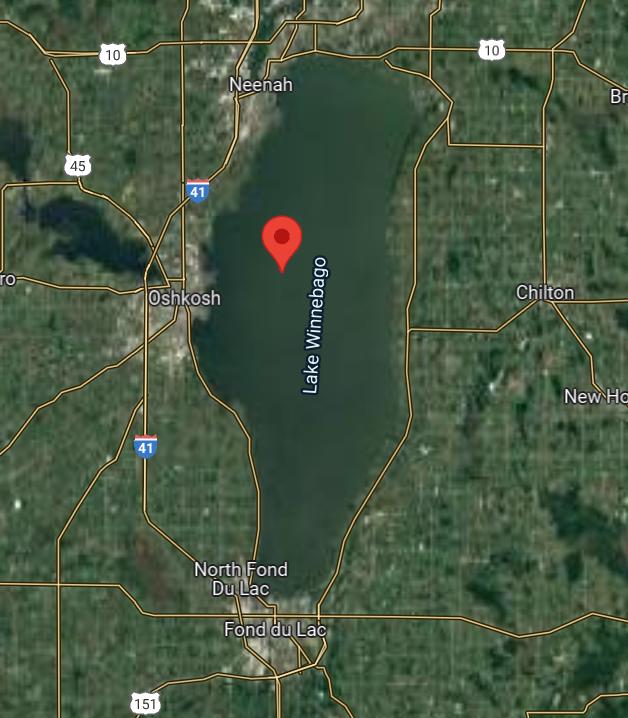
Green Bay
Green Bay is the largest freshwater estuary in the world. The southern portion of the bay becomes narrow and meets land where the city of Green Bay is located. Measuring almost 100 miles long and 10 miles wide in areas, Green Bay is a massive lake anglers can spend their lifetime trying to master.
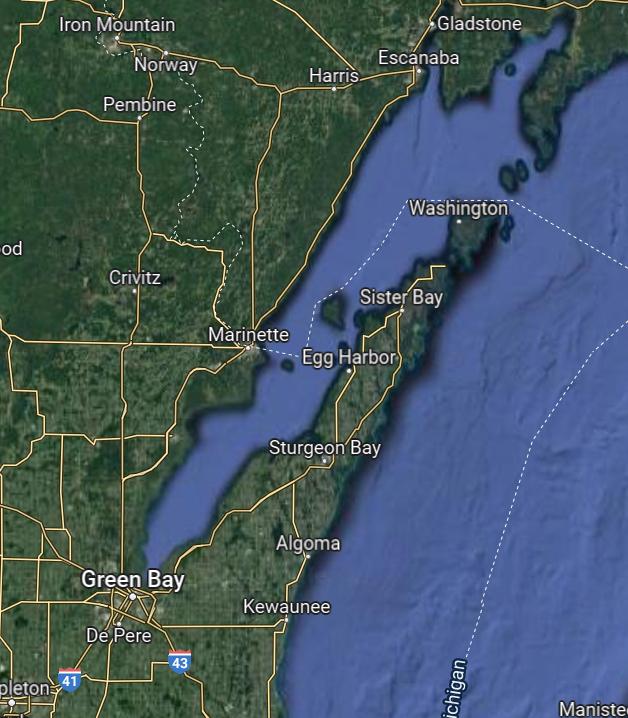
Lake Alice
This renowned walleye ice fishing lake sits three miles east of Tomahawk, Wisconsin. This is a small lake compared to Green Bay and Winnebago, with less than 1,500 acres of watershed. Fishing regulation for Lake Alice states the following for walleye restrictions:
“The minimum length is 15″, but walleye, sauger, and hybrids from 20″ to 24″ may not be kept, and only one fish over 24″ is allowed. The daily bag limit is 3.”
https://dnr.wi.gov/

Ideal Fishing Conditions
Getting to the lake early will increase your chances of catching walleye.
Remember that Wisconsin’s weather is extremely cold throughout most of the winter fishing season. Temperatures below zero are normal so wear the appropriate clothing.
Walleyes are notoriously finicky in the winter, especially in northern Wisconsin, which makes the chase even better. Most anglers who ice fish for walleye in these parts enjoy the struggle of trying to locate walleye and catching them. The margin of error is so small that it is normal for experienced ice fishermen to catch nothing when they go out.
Best Timing
It’s best to start your fishing day early. Arriving on the lake before dawn ensures you capitalize on the best times of the day to fish.
If you spend too much time at the wrong spot, at the wrong time, you will have wasted moments you could have been fishing for walleye at a different location on the lake.
It is important to recognize when it’s time to pack up and move to another location. It requires the ability to admit that the spot you chose isn’t working, to humble yourself, and to move on.
Depth
When you begin fishing, start shallow. As the day progresses, keep drilling holes in the ice deeper and deeper. Walleye move throughout the day, so changing your fishing depth will increase your chances at catching them.
Holding your lure a few feet off the bottom while bouncing the rod in your hand will create an action that will attract walleye.
Rattling the jig or lure near the bottom with constant movement is important because walleye are extremely lethargic during the winter season and will be attracted to what they see as easy prey. What Depth Should I Ice Fish for Walleye? is an article we wrote that goes into further detail about tracking how walleye move through the day and at what depths you can catch them.
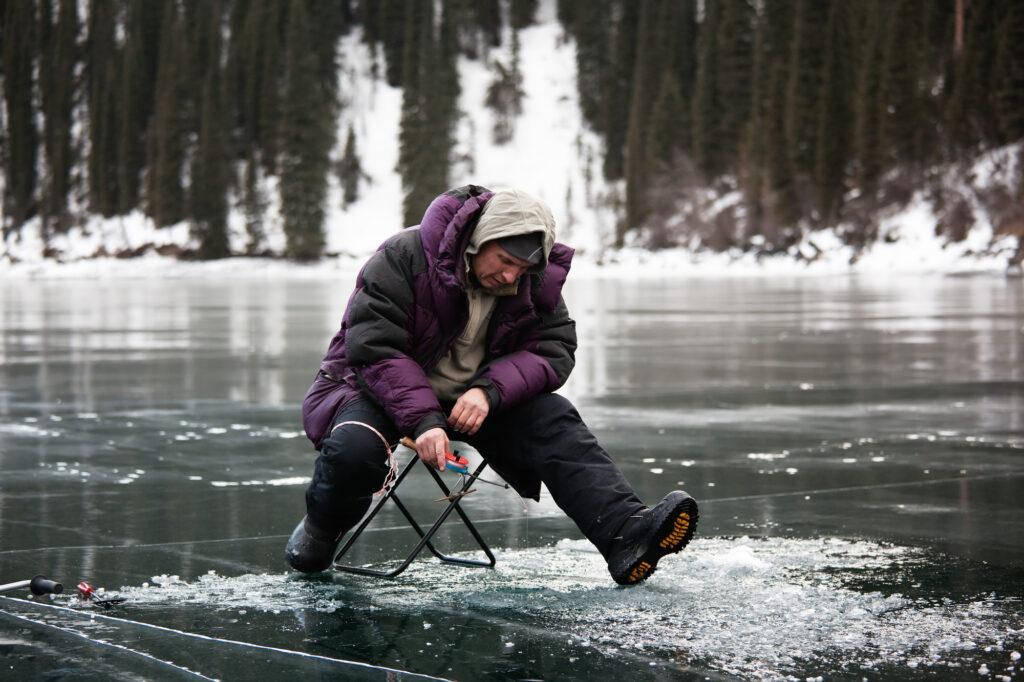
Two-Rod Setup
Ice fishermen in Wisconsin usually set up two rods, one for jigging and one “deadstick.” The jigging rod is an active rod and reel setup that uses a jig or lure, while the deadstick is set up with a minnow and is a passive way to catch walleye.
If you need help with the other gear when ice fishing, check out our article Ice Fishing Beginner’s Guide [Safety, Gear, and Tips], which outlines some easy-to-follow tips.
Jigging
Most of your bites will come from jigging. This is because walleye will be enticed and alerted to the constant movement of the jig. In the winter, especially in Wisconsin, where it gets extremely cold, walleye become slow-moving, just like all other fish species.
Keep a steady movement up and down on the rod to jig for walleye properly. This movement transfers to the lure below the surface of the water and will mimic a bait fish.
Remember, walleye are predatory fish, so anything you can do to mimic their natural prey can be effective while ice fishing.
Dead Stick
A dead stick is an ice fishing setup that uses a live minnow and bobber. The active movement of the minnow attracts the walleyes. They also give off a small scent which further entices them. It is a simple way to increase your chances of catching walleye due to its passivity.
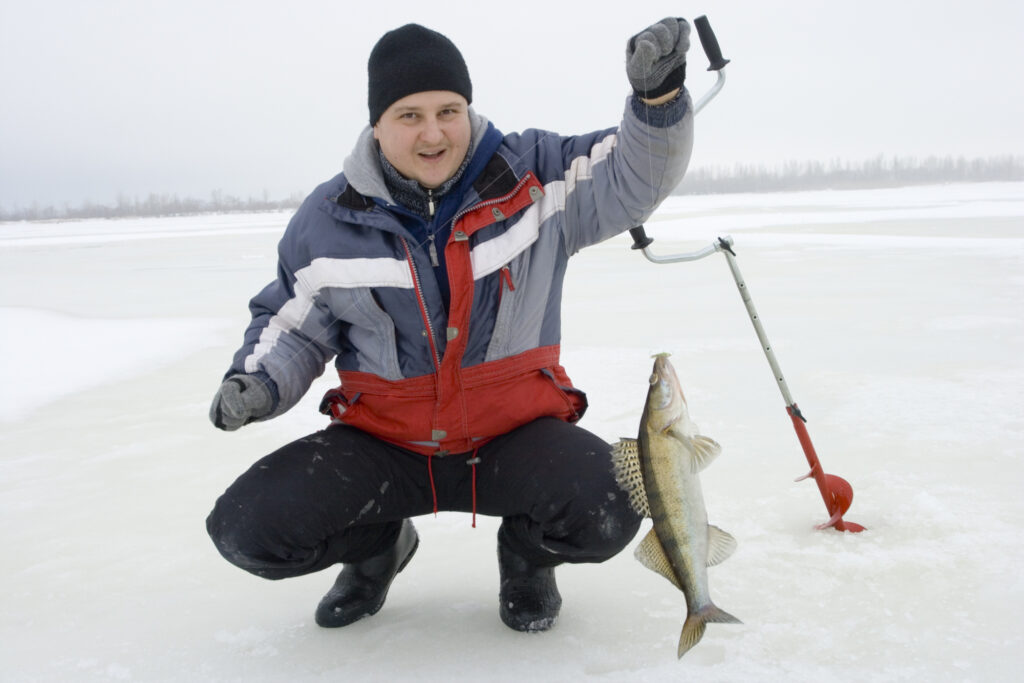
Transportation
Being able to move quickly and effectively matters when ice fishing in Wisconsin. Often lakes in Wisconsin can be thousands of acres in area. A proper quad or ATV isn’t just practical in these areas but necessary.
Locating Sweet Spots (Hole Hoping)
How do you identify where the walleye is when ice fishing? Often, lakes will have a consistent underwater terrain for large stretches of distance broken up by different types of underwater structures.
Underwater structure & GPS
The structure underwater can be fallen trees, ruins, or natural undulations that have occurred over centuries, if not longer. Locating these structures is crucial to locating the walleye.
So how do you find them? A great way is to scout during the summer when the lake is accessible by boat. Ice fishermen use a GPS device to plot out areas with underwater interests, such as structure or rapid changes in depth.
Once plotted, the fishermen reference these GPS coordinates while walleye fishing during winter.
The key is locating where the fish, including baitfish, school naturally. If you can identify these areas, you increase your chances of catching walleye enormously.
The alternative to using pre-determined GPS plot points is to aimlessly drill holes in the ice and hope you get lucky. Of course, this works for a lot of fishermen.
But for those who want a consistent method of locating walleye during the winter while ice fishing, a GPS is the key to success. The Best Ice Fishing Fish Finders overviews great options for ice fishing. Most models today have GPS built into their functionality.
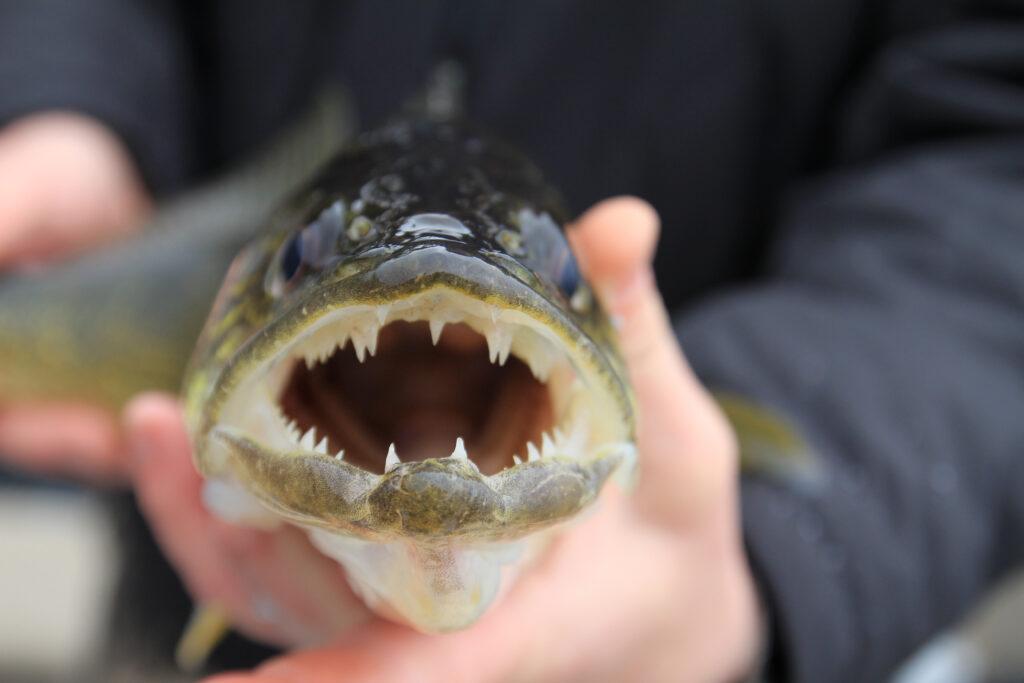
Walleye’s Natural movement
The walleye in deep lakes suspend for most of the day.
Usually, during the early morning hours and dusk, they move to more structured areas for a short time, then move on. Walleyes are very nomadic in their bodies of water.
They move, stay, and move again. It is normal for the walleye fishing to be hot for a moment and then cool off the next. This is because they’ve probably moved (but they usually make their rounds, so they’ll probably be back sometime during the day). An experienced fisherman will know when to stay at their current hole or move on too.
If you stay on a spot too long, the fish, including other species, will become conditioned to your lure, which isn’t good. This further supports the idea of plotting out your fishing trip prior to setting on the ice via GPS plots and creating a plan of action.
Once you’ve given it an hour or two, feel free to try old spots where you drilled earlier. Good chance that new walleye that haven’t seen your lure yet, have arrived on the structure, which gives you an opportunity for a fresh catch.